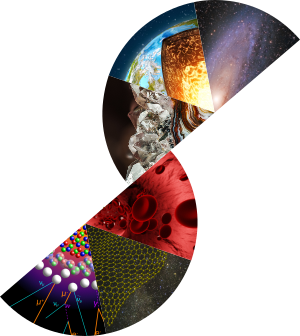Whereas climate predictions are increasingly alarming, renewable energies development is becoming urgent and for that, hydrogen is considered by the scientific community as one of the best alternatives to fossil fuel combustibles. Today, dihydrogen is mainly produced from energy-intensive routes such as methane reforming or electrolysis. A more environment friendly dihydrogen production method is the biogas route via pyrolysis of biomass. Unfortunately, this process also produces a non-negligible amount of other greenhouse gases such as CO2, CO, H2S.
For its use in fuel cell-based applications, the H2 needs to reach a purity of 300 µmol.mol-1.(1) Consequently, the proposed biogas route requires an important purification step because these impurities can severely poison the platinum electrocatalyst employed in electrodes and cause degradation of the performance of the devices.
The aim of my thesis work is to investigate new fluorinated porous materials for hydrogen purification. The idea here is to explore a category of hybrid porous materials called “Metal Organic Framework” capable of selectively adsorbing targeted gases like CO2, and thus decontaminate the biogas mix produced by biomass pyrolysis.
In this presentation, I will show my work carried out on three-dimensional anion-pillared MOF materials of primitive cubic topology. They consist in M-pyrazine square layers interconnected by octahedral pillars of M' and fluor (M, M' = metal, Fe, Co, Ni, Nb, Al...).(2,3) This family derivates from a compound named NbOFFIVE-1-Ni already reported for its remarkable CO2 capture properties by P. M. Bhatt et al. in 2016.(4) The modified MOFs, synthesized by microwave assisted hydrothermal route, were characterized by a set of complementary techniques such as powder or single crystal X-Ray Diffraction (PXRD and SCXRD), thermal analysis or gas adsorption.
References:
(1) ISO 14687:2019. ISO. https://www.iso.org/standard/69539.html (accessed 2023-02-27).
(2) Nugent, P.; Belmabkhout, Y.; Burd, S. D.; Cairns, A. J.; Luebke, R.; Forrest, K.; Pham, T.; Ma, S.; Space, B.; Wojtas, L.; Eddaoudi, M.; Zaworotko, M. J. Porous Materials with Optimal Adsorption Thermodynamics and Kinetics for CO2 Separation. Nature 2013, 495 (7439), 80–84. https://doi.org/10.1038/nature11893.
(3) Gautier, R.; Donakowski, M. D.; Poeppelmeier, K. R. Orientational Order of [VOF5]2− and [NbOF5]2− Polar Units in Chains. Journal of Solid State Chemistry 2012, 195, 132–139. https://doi.org/10.1016/j.jssc.2012.01.033.
(4) Bhatt, P. M.; Belmabkhout, Y.; Cadiau, A.; Adil, K.; Shekhah, O.; Shkurenko, A.; Barbour, L. J.; Eddaoudi, M. A Fine-Tuned Fluorinated MOF Addresses the Needs for Trace CO 2 Removal and Air Capture Using Physisorption. J. Am. Chem. Soc. 2016, 138 (29), 9301–9307. https://doi.org/10.1021/jacs.6b05345.

 PDF version
PDF version
